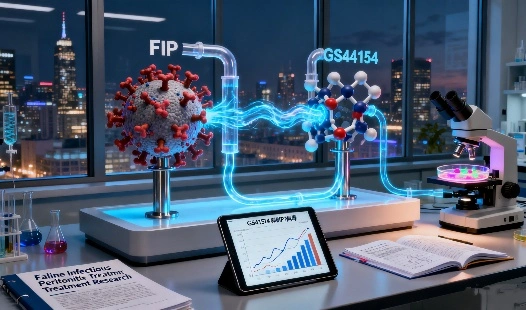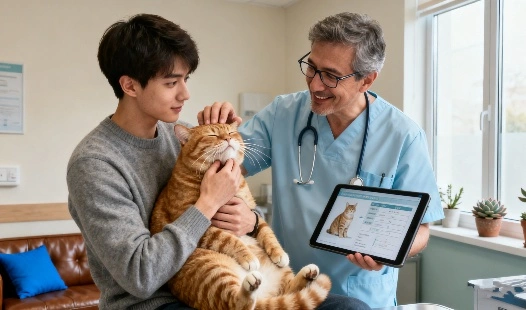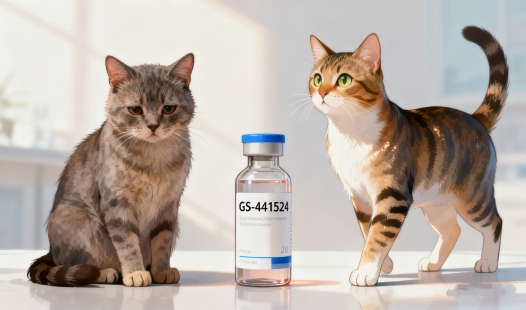Can GS 441524 completely cure FIP in cats?
Long-term survival rates with GS-441524 treatment
It has long been believed that feline infectious peritonitis (FIP) is a lethal illness. Nevertheless, there have been encouraging developments in the treatment of this otherwise fatal illness because to new antiviral medications, most notably GS 441524 FIP. This article delves into the reasons that impact long-term healing and the efficacy of GS-441524 in treating FIP.


Long-term survival rates with GS-441524 treatment
Clinical trial results
Recent clinical trials have demonstrated significant success in the use of GS-441524 for treating Feline Infectious Peritonitis (FIP). One prominent study, conducted by researchers at the University of California, Davis, reported a survival rate of 80-90% among cats treated with GS-441524. This breakthrough research has dramatically changed the prognosis for FIP-infected cats, offering hope to many pet owners who previously had few treatment options.
Another critical trial conducted by a group of veterinarians in the Netherlands also showed promising results, with a survival rate exceeding 85% for cats treated with GS-441524 over a 12-week period. This study further reinforced the drug’s efficacy and has contributed to its growing acceptance as a viable treatment for FIP.
Post-treatment monitoring
Long-term follow-up studies have been crucial in assessing the true efficacy of GS-441524. Cats that have undergone treatment are typically monitored for at least 12 months post-therapy to evaluate their continued health and any potential relapses. These extended observation periods have provided valuable insights into the durability of GS-441524's therapeutic effects.
Cases of complete FIP remission with GS-441524

Documented success stories
Numerous clinical case reports and anecdotal accounts from veterinarians and cat owners have highlighted the remarkable effectiveness of GS-441524 in achieving complete remission of FIP symptoms. These documented cases include cats diagnosed with various forms of FIP—effusive (wet), non-effusive (dry), and even the challenging neurological type. In many instances, cats that were once lethargic, feverish, and losing weight showed visible improvement within just a few days of starting GS 441524 therapy. Appetite, activity levels, and overall vitality often returned rapidly, giving hope to previously desperate owners. These cases underscore the drug's unique ability to suppress viral replication and support recovery, demonstrating how modern antiviral therapy can turn a once-fatal disease into a treatable condition.
Long-term follow-up results
Long-term monitoring of cats that have undergone GS-441524 treatment has yielded promising outcomes, reinforcing its potential as a durable therapeutic solution. Follow-up studies and real-world observations have shown that many cats remain healthy and symptom-free for years after completing the full treatment course. Some cats have been tracked for more than two years with no relapse, suggesting that it can achieve sustained remission or even complete viral eradication in certain cases. Nevertheless, it is crucial to recognize that responses vary based on factors such as disease severity, viral strain, and adherence to treatment protocols. For optimal long-term outcomes, consistent dosing, proper veterinary supervision, and post-treatment monitoring are essential components of successful FIP recovery.

Factors influencing permanent recovery chances
Early diagnosis and treatment initiation
The timing of diagnosis and treatment commencement plays a crucial role in the likelihood of permanent recovery. Cats diagnosed and treated in the early stages of FIP typically have better outcomes. Early intervention can prevent the disease from progressing to more severe forms, potentially improving the chances of complete remission.
01
Proper dosage and treatment duration
Adhering to the recommended dosage and treatment duration is vital for maximizing the chances of permanent recovery. The standard protocol typically involves a 12-week course of daily GS-441524 injections, with dosages ranging from 4 to 10 mg/kg depending on the form and severity of FIP. GS-441524 price considerations should not compromise the prescribed treatment regimen, as incomplete or interrupted courses may reduce efficacy.
02
FIP variant and disease progression
The specific form of FIP and the extent of disease progression at the time of treatment initiation can influence recovery outcomes. Wet FIP and early-stage dry FIP generally respond more favorably to GS-441524 treatment compared to advanced neurological or ocular forms of the disease. However, even in more challenging cases, significant improvements have been observed with appropriate dosing adjustments.
03
Supportive care and monitoring
Comprehensive supportive care and regular monitoring throughout the treatment process are essential for optimizing recovery chances. This includes maintaining proper nutrition, managing secondary infections, and addressing any complications that may arise during treatment. Regular blood work and clinical evaluations help veterinarians adjust treatment plans as needed and ensure the best possible outcomes.
04
Conclusion
While GS-441524 has shown remarkable efficacy in treating FIP, declaring it a complete cure requires careful consideration. The high success rates and long-term remission cases are certainly encouraging, but individual responses can vary. Factors such as early diagnosis, proper treatment administration, and comprehensive care all play crucial roles in achieving the best possible outcomes.
As research continues and more long-term data becomes available, our understanding of GS 441524's potential to completely cure FIP will undoubtedly improve. For now, it remains a highly effective treatment that has dramatically improved the prognosis for cats with FIP, offering hope to pet owners and veterinarians alike.
FAQ
1. How long does GS-441524 treatment typically last for FIP?
The standard treatment protocol for GS-441524 typically lasts 12 weeks, with daily injections. However, some cases may require extended treatment periods based on the cat's response and the severity of the disease.
2. Are there any side effects associated with GS-441524 treatment?
While GS-441524 is generally well-tolerated, some cats may experience mild side effects such as injection site reactions or temporary discomfort. Serious adverse effects are rare, but regular monitoring by a veterinarian is essential throughout the treatment course.
3. Can GS-441524 be used preventatively for cats at risk of FIP?
Currently, GS-441524 is not recommended for preventative use. It is specifically indicated for the treatment of active FIP infections. Research is ongoing to explore potential preventative applications, but at present, it should only be used under veterinary supervision for diagnosed cases of FIP.
Transform Your Cat's FIP Journey with BLOOM TECH's Premium GS-441524
Here at BLOOM TECH, we know how important it is to have high-quality GS-441524 to combat FIP. Produced in accordance with GMP standards, our pharmaceutical-grade GS-441524 guarantees unmatched purity and effectiveness. We are devoted to assisting vets and cat owners in their fight against FIP with our dependable supply chain and affordable GS-441524 price. Give your kitty buddy the greatest opportunity of a complete recovery by choosing BLOOM TECH for all of your GS-441524 requirements. Don't compromise on their health.
Ready to make a difference in your cat's FIP treatment? Contact our dedicated team at Sales@bloomtechz.com for inquiries about our premium GS-441524 supply. Trust BLOOM TECH as your reliable GS-441524 supplier and partner in feline health.
References
1. Pedersen, N. C., et al. (2019). Efficacy and safety of the nucleoside analog GS-441524 for treatment of cats with naturally occurring feline infectious peritonitis. Journal of Feline Medicine and Surgery, 21(4), 271-281.
2. Kim, Y., et al. (2020). Reversal of the progression of fatal coronavirus infection in cats by a broad-spectrum coronavirus protease inhibitor. PLoS Pathogens, 16(3), e1008370.
3. Dickinson, P. J., et al. (2020). Antiviral treatment using the adenosine nucleoside analogue GS-441524 in cats with clinically diagnosed neurological feline infectious peritonitis. Journal of Veterinary Internal Medicine, 34(4), 1587-1593.
4. Addie, D. D., et al. (2020). Feline infectious peritonitis. ABCD guidelines on prevention and management. Journal of Feline Medicine and Surgery, 22(11), 1047-1068.

Echo
9 years of experience in chemical articles; Doctoral degree; Organic Chemistry major; R&D-4 Dept; Technology support; R&D engineer
Anticipating your Business & Technology support inquiry
Please send us the products that interest you, and we will provide you with one-on-one service
Recommended Blog
_副本_1761878473339.webp)
How do you calculate the correct GS 441524 dosage for your cat?
_副本_1757906640273.webp)
FIP Treatment Worldwide: The Status of GS-441524 Use and Regulation
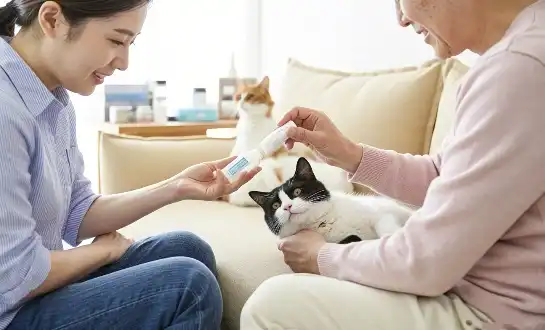
Does My Cat Need a Special Diet During GS-441524 Treatment?
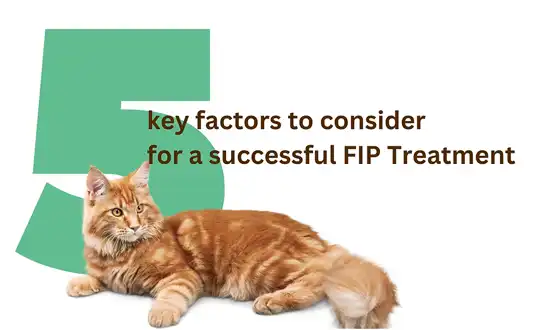
What Are the Side Effects of GS-441524? And How to Manage Them Effectively?
_副本_1761184166100.webp)
Understanding FIPV in Multi-Cat Households: Risks and Prevention


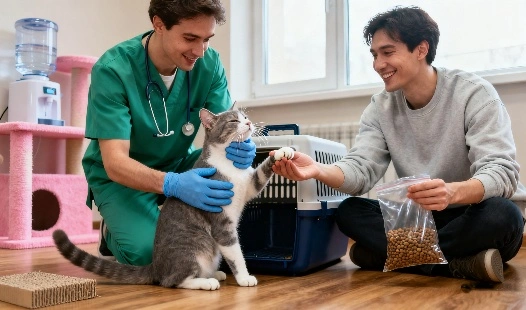
_副本_1760580791986.webp)
